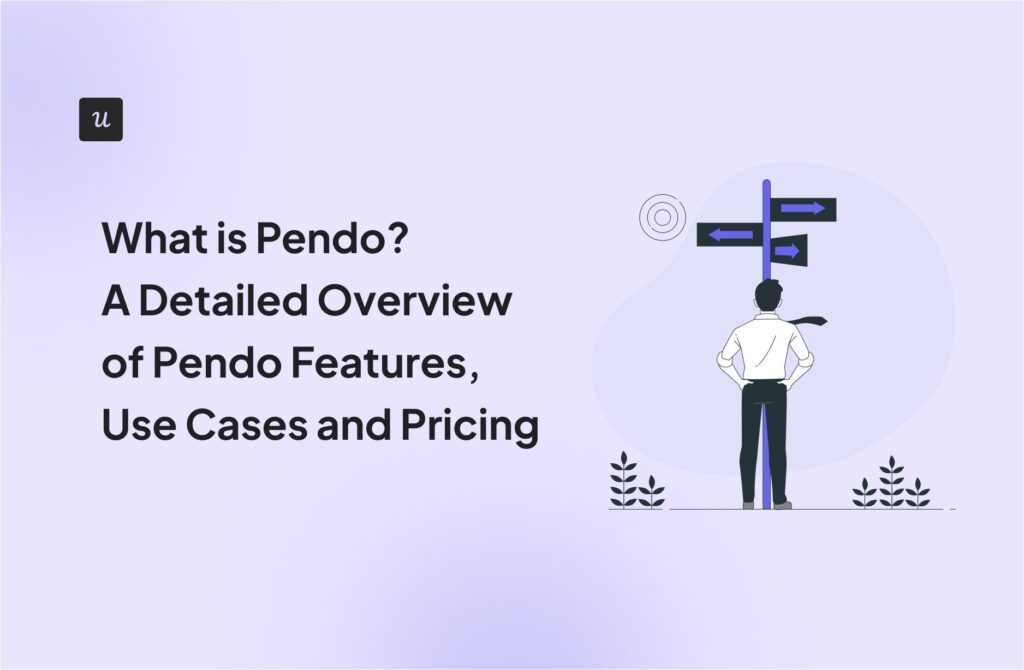
Freemium or Free Trial: What do Your Buyers Prefer? – Jana Frejova PMM lead at Spendesk
Freemium or Free-Trial? That is the question that many product managers and marketing managers need to tackle to choose the best pricing strategy for their SaaS products.
If you are one of them, you’re in the right place.
That’s exactly what Jana Frejova, Product Marketing Lead at Spendesk, discussed in her recent presentation at the Product Drive Summit 2022 organized by Userpilot.
To help you choose the best model for your organization, let’s look at 6 key questions you should ask before making the decision and the contexts where each of them is more suitable.
In the article, we also discuss different strategies you can leverage to drive conversions from freemium or free trial to paid plans.
That’s quite a bit, so without further ado, let’s jump right into it!
Get The Insights!
The fastest way to learn about Product Growth, Management & Trends.
Summary of freemium or free trial
- Freemium gives users free access to limited product functionality for an unlimited time. It’s a good way to boost brand awareness and add value to products dependent on the network effect.
- Free trials allow customers to experience the full product functionality but for a limited time. They could require user credit card details or not.
- Free trials have better conversion rates than freemium models. You can expect about 5 paid users for every 1000 website visits from a free trial and only 3 paid users from freemium.
- There are six factors to consider when choosing the model for your SaaS: target market and its size, the complexity of your product and the needs of your users, and whether you can afford it.
- Freemium is better for overserved markets whereas free trials are better for underserved markets.
- Freemium works better for low-complexity products that don’t require much learning.
- Free trials are more suitable when you are concerned about the technical and financial sustainability of the product.
- Freemium is a better model for end users with simple needs, whereas free trials work better for users with more specialized needs.
- To make freemium work, you need to target a larger market while a free trial is suitable for markets of any size.
- To drive conversions from freemium to paid plans, limit access to features or usage, and add friction to the user experience. Use in-app messages to make users pay attention to the premium functionality.
- Userpilot extends this capability to mobile, allowing you to onboard and engage mobile app users effectively with personalized messaging, push notifications, and surveys.
- To increase the conversion rate from free trials, put minimum viable onboarding in place to allow users to experience your product value fast. Moreover, create a sense of urgency and appeal to their FOMO.
- Want to see how Userpilot can help you convert your users? Book the demo!
What’s freemium?
Freemium is a model where users can access and use the product without paying.
From a business point of view, this makes sense only if the users have an incentive to eventually upgrade to the paid plans.
The freemium model has a number of benefits.
To start with, it’s a powerful way to build brand awareness. Moreover, for products relying on the network, like social networks or dating apps, this is a reliable way to add value to the product.
It’s also a good way to test your product-market fit and a chance to collect user data which you can leverage to further develop your product.
What does a free trial involve?
In the free trial model, users get access to full functionality but for a limited time only. They give users an opportunity to experience the full value of the product without any expenses.
Typical free trial periods are 7, 14, 21, or 30 days.
This very much depends on the product. On the one hand, you want to give your users enough time to reach the Aha Moment and activate. On the other, you want your users to upgrade, so the period can’t be too long.
Some free trials still require users to provide their credit card details. This is a good strategy if you want to pre-qualify your leads and maximize your Revenue Per User (RPU).
However, the strategy is not recommended if you’re only beta-testing the product, want to collect product usage data, increase the user base, or are more concerned about total revenue rather than RPU. In this case, you should go for a free trial without a credit card.

Which is more effective, freemium or free trial?
According to the 2022 OpenView Product Benchmark Survey, free trials drive more conversion to paid plans than freemium.
Free trials may get fewer free sign-ups to start with, but they are more likely to result in upgrades to paid plans. The conversion rate is in the region of 17%, so for every 1000 website visits, you may get 30 free sign-ups resulting in 5.1 paid customers.
A freemium model can give you more free sign-ups (60 for 1000 website visits), but only 3 of them end up upgrading to a paid plan. This gives you a conversion rate of around 5%.

However, the figures are just one of the factors to consider when choosing the acquisition model for your SaaS.
Questions to ask
What else should you consider? There are six key factors to take into account:
- Which user segment are you after?
- What complexity and learning curve can the user handle?
- Can you afford to have free users?
- Is the target user willing to pay… eventually?
- What do your target users care about?
- How many users can you target?

Let’s tackle them all, one by one.
1. Which user segment are you after?
The choice of the best pricing strategy will depend on the segment you’re targeting.
There are three key user segments that you could divide the market into.
Everyone
This is the Holy Grail of software marketing. Everyone would like to be able to achieve this, but only the likes of Uber or Netflix have enough clout to get it. That’s because it requires a better product at a lower price.
If you’re in a position to offer a product like this, both freemium and free trial will work.
Overserved market
Such markets are dominated by well-established companies, like Adobe. To disrupt them, you can offer a simpler product with limited functionality and a flatter learning curve but at a lower price, as Canva did.
As you are trying to get your foot in the door and build your user base, a freemium model will work better.
Underserved
Underserved markets have lots of players but they may be offering parity products. They appeal to everyone but don’t address any specific user needs particularly well.
To enter a market like this, you should try to deliver a superior product, possibly satisfying niche needs, and commanding a premium price.
Free trials are better suited for underserved markets because they allow you to attract higher-quality leads.

2. What complexity and learning curve can the user handle?
How complex your product is and how steep is its learning curve are other factors to bear in mind when choosing your free model.
For low-complexity products, with flatter learning curves, like Deliveroo, freemium is a more suitable model.
For more complex products requiring a lot of learning, a free trial is a better choice. Hello Fresh, provides users with the ingredients and general guidance on how to cook, but learning how to do it takes time and effort.

3. Can you afford to have free users?
Free plans are expensive to maintain.
To start with, there is a financial burden. If you go with a freemium plan, only about 5% of your users will be paying customers, while the rest will be on the free plan. This means that the 5% need to pay for the rest of the users.
What’s more, free users put a strain on product performance. Your product infrastructure needs to be robust enough to sustain them.
Moreover, you still need to provide customer support to unpaid users to enable them to access the product. Even if you rely on technical solutions, like chatbots or resource centers, it’s still expensive.
That’s why many companies build communities around their products and try to shift some of the support burdens to their users.

4. Is the target user willing to pay… eventually?
A freemium model may not be suitable for SaaS companies targeting small businesses with simple needs.
In the case of such users, your premium model may satisfy all their needs and they may not have the need to upgrade to the paid solution.
That was the reason why Chargebee changed its free plan. Originally, they offered 10 free invoices a month, which was plenty for small consulting companies, who had no incentive to upgrade.
Getting the right balance between free and paid functionality is tricky. That’s why many companies resign from free plans completely.

5. What do your target users care about?
The choice of the best pricing strategy depends also on your target users, and in some instances, neither the freemium nor free trial will work.
For end users both free trial and freemium work great. The first one is more suitable for users with specialized needs and pain points while the latter is better for end users with simple requirements.
However, neither of the models is particularly good when you’re targeting the decision-makers. That’s because they are more concerned about the ROI and the scalability.
These are not possible to demonstrate via freemium or trial. A sales-led approach with a demo is anecdotally the most successful approach to reach them.

6. How many users can you target?
The size of the market matters a lot when it comes to choosing either the freemium or free trial model.
Because of the lower conversion rates, you need to target more customers to make your model work. How many exactly depends on how much you charge for your product, but overall, freemium requires a larger TAM than a free trial.

Putting it all together
So to summarize, freemium models are more suitable if you:
- are targeting everyone or overserved markets
- have a low-complexity product with a flat learning curve
- can afford it financially and technically
- are targeting end users with simple needs
- can target a large market
The free trial model is more appropriate when you:
- are targeting everyone or underserved markets
- have a low- to a medium-complexity product with a steeper learning curve
- can’t afford freemium financially or technically
- are targeting end users with specialized needs
- want to target markets of any size

Conversion strategies
Whether you choose a freemium or free trial to convert your customers, you need to incentivize them to upgrade to a paid model.
Let’s look at a few strategies you can use to drive upsells.
Freemium to Premium conversion strategies
Companies rarely rely on one strategy. Instead, they pull a combination of levers to drive conversions to paid plans.
1. Limit access to features
Giving your users free access only to a limited number of features is one way to encourage them to upgrade to the paid plan.
Trello does exactly that. As mentioned, the trick here is to get the right balance between the free and paid functionality so that you don’t give away too much free of charge.

While users are engaging with the product, keep reminding them about the full product functionality.
Use in-app messages like tooltips to attract their attention to the features that they have no access to and prompt them to upgrade.

Better yet, give your user a chance to experience the value of the full functionality firsthand.
Try embedding a free trial of the premium functionality for freemium users. By giving access to premium features, you show them what they’re missing, and there’s a chance they won’t go back to the free plan.

Reverse trials are based on the same principle. When users first sign up for the product, they automatically gain access to premium features.
However, this is for a limited time only. After the trial period ends, they go back to the free plan. Unless they upgrade.

2. Introduce usage limitations
Limiting usage is another way of driving upsells. In contrast to the previous strategy, users can experience full product functionality. However, there are limits on how much they can enjoy it.
For example, Sembley AI, a meeting transcription tool, gives its users 120 minutes of audio uploads for free. If they need more, they have to upgrade.

Like with limited feature scope, the key is choosing the usage thresholds wisely. Make sure your free allowance doesn’t satisfy all needs of your target users.
3. Introduce barriers to user experience
Giving users access to full functionality but with extra friction built into the user experience is another upsell tactic.
This could be in the form of a branding watermark in photo or video editing software, like Filmora.

And what about adding some ads?
It kills two or even 3 birds with one stone. It adds friction to the free plan and yet allows users to experience the full product value while supplementing your budget to subsidize the free users.

Free trial conversion strategies
To convert users on a free trial to paying customers, you need to convince users of your product value before the trial is over.
1. Use minimum viable onboarding
A solid onboarding process will allow you to guide your users to the activation stage. As you have limited time to achieve this, make sure your onboarding is relevant.
First, use a sign-up flow to collect the data necessary to segment your users and customize the onboarding experience.

Next, use checklists to display the key features that the users will need to start using your product.

In addition to the checklists, design interactive walkthroughs for each user segment to prompt them with the relevant features.

2. Create a sense of urgency
By creating a sense of urgency, you increase the chance they upgrade. To achieve this, make your trial period just only enough to experience the Aha moment.
And don’t let them forget about the passing time with in-app messages like this modal from Adobe.

3. Appeal to the FOMO
You can increase the impact of your reminder modals by highlighting to your users what benefits they will be missing out on when their trial expires.

Conclusion
Adding a freemium or free trial to your pricing plans gives users a chance to experience the value of your product.
However, to make the model sustainable, you need to make sure your users find a reason to upgrade to paid plans. You can do it by skillfully limiting the usefulness of your product.
If you would like to use how you can segment your users and drive conversions with in-app messaging in Userpilot, book the demo!





